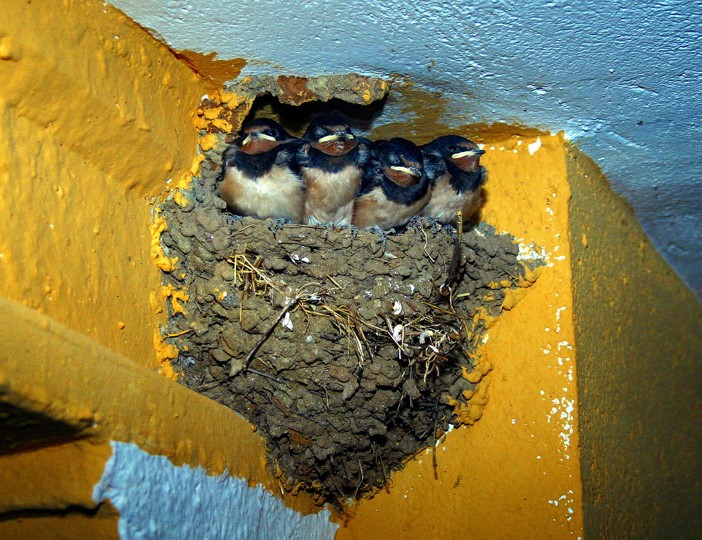LINKED PAPER
Individual condition, but not fledging phenology, carries over to affect post‐fledging survival in a Neotropical migratory songbird. Evans, D.R., Hobson, K.A., Kusack, J.W., Cadman, M.D. & Mitchell, G.W.. 2019. IBIS. DOI: 10.1111/ibi.12727 VIEW
Ironically, one of the most important stages in the life of a migrating songbird is the least understood (Vitz & Rodewald 2011). It concerns the post-fledgling period when juveniles have left the nest but have not yet migrated. Ornithologists divide this period into two parts: the “parental care period” in which the young birds depend on their parents and the “independence period” in which the juveniles learn to fend for themselves. Estimating individual mortality during this period is extremely difficult because researchers have to document the fate of numerous birds following them on foot using radiotelemetry (think of the classic image of a scientist scanning the surroundings with a large antenna). A team of Canadian ornithologists used a different approach: they relied on an automated radiotelemetry array spanning 60,000 km² to record the fate of juvenile Barn Swallows (Hirundo rustica).
Survival
In 2016 and 2017, the researchers equipped 216 young Barn Swallows with a radiotransmitter and recorded their condition in the nest. As long as the swallows remained within the 60,000 km² area around Ontario (Canada), they could follow the movement and survival of these small songbirds. The results revealed that nestlings in better condition had higher chances of survival (an average 2% higher daily survival in 2016 and an average 5% higher daily survival in 2017). The link between body condition and daily survival is logical, but there are several mechanisms that can explain this relationship (Cox et al. 2014). Nestlings in poor condition are more prone to diseases and vulnerable to adverse environmental conditions. In addition, a better body condition might result in better cognitive abilities, which translates into more efficient foraging and higher probabilities of escaping from predators.
Figure 1 Locations of study sites (black/white dots) and automated radio receiving towers (red dots) within (a) southern Ontario, Canada, (b) Norfolk County and (c) Wellington County in 2016 and 2017.
Broods
Barn Swallows produce two broods per years, allowing the researchers to investigate the difference in survival between early and late nestlings. Because nestlings from the second brood have less time before they have to leave on migration, they might show lower survival rates compared to the early nestlings (Raja‐Aho et al. 2017). As expected the second brood birds spent about 3 weeks less on the breeding grounds before migrating south. Unexpectedly, they did not show lower survival rates than birds from the first brood. It thus seems that nestlings from the second brood still have enough resources to survive. However, it is possible that these birds started migration in a lower body condition compared to the first brood birds and might thus suffer higher mortality rates during migration or on the wintering grounds. This remains an open question.

Figure 2 Daily apparent survival probability for juvenile Barn Swallows in average condition during the post‐fledging period in southern Ontario for (a) 2016 and (b) 2017. The dashed vertical line shows the transition from parental care to independence.
Three years
Overall, survival rate was low among juvenile Barn Swallows. About 40% of nestlings survive long enough to leave on migration, highlighting the importance of the post-fledgling period on population dynamics. In Ontario, a nest produces about 2.1 female fledglings (COSEWIC 2011). Taking into account juvenile and adult survival, this amounts to 0.43 new recruits per adult female per year. This means that a female should survive and reproduce at least three years to replace herself in the population. The annual survival of adult Barn Swallows is only 48.7% (Garcia-Pérez et al. 2014), making the survival for three consecutive years a challenging endeavor. These numbers help explain the recent population declines in Canadian Barn Swallows (COSEWIC 2011). This study indicates that measures that increase nestling survival could be a crucial conservation strategy, although it is advisable to safeguard these birds during their entire lifecycle.
An award winning paper
This study provided key insights into the survival rates of juvenile Barn Swallows. It is no surprise that the IBIS Associate Editors nominated this work as one of their favourite Early Career Research papers of 2019. With a open public vote for the four short-listed papers, Dean and his colleagues paper were awarded the Best ECR Paper in IBIS (2019).
References
COSEWIC (2011). COSEWIC Assessment and status report on the Barn Swallow Hirundo rustica in Canada. Ottawa: Committee on the Status of Endangered Wildlife in Canada. VIEW
Cox, W.A., Thompson, F.R., Cox, A.S. & Faaborg, J. (2014). Post‐fledging survival in passerine birds and the value of post‐fledging studies to conservation. Journal of Wildlife Managment 78: 183– 193. VIEW
García‐Pérez, B., Hobson, K.A., Albrecht, G., Cadman, M.D. & Salvadori, A. (2014). Influence of climate on annual survival of Barn Swallows (Hirundo rustica) breeding in North America. Auk 131: 351– 362. VIEW
Raja‐Aho, S., Eeva, T., Suorsa, P., Valkama, J. & Lehikoinen, E. (2017). Juvenile Barn Swallows Hirundo rustica L. from late broods start autumn migration younger, fuel less effectively and show lower return rates than juveniles from early broods. Ibis 159: 892– 901. VIEW
Vitz, A.C. & Rodewald, A.D. (2011). Influence of condition and habitat use on survival of post‐fledging songbirds. Condor 113: 400– 411. VIEW
Image credits
Featured image: Barn Swallow Hirundo rustica | Mario Modesto Mata | CC BY-SA 3.0 Wikimedia Commons






